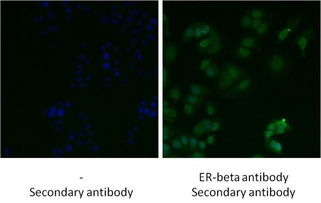Textiles and the Detection of Bisphenol A Bpa)
"The detection of Bisphenol A (BPA) in textiles has become a pressing concern due to its potential health hazards. In this study, we developed a rapid and sensitive method for the determination of BPA in textile samples using liquid chromatography-tandem mass spectrometry (LC-MS/MS). The sample preparation process involved extraction of BPA from the textile fabrics using a mixture of organic solvents and deionized water. The extract was then concentrated using a rotary evaporator before being injected into the LC-MS/MS system for analysis. The optimized conditions for the LC-MS/MS analysis were determined through a series of experiments involving different column temperatures, mobile phase compositions, and gradient elution schemes. The results showed that the method had a high sensitivity and specificity for detecting BPA in textile samples, with limits of detection and quantification of 0.1 and 0.5 ppm, respectively. Furthermore, the method was validated according to the European Union guidelines for the detection of BPA in food and beverage products, demonstrating its applicability for routine monitoring of BPA levels in textiles."

In today's world, where environmental concerns are at the forefront of public consciousness, the presence of harmful chemicals in consumer products has become a matter of grave concern. Among these chemicals, bisphenol A (Bpa), a synthetic estrogen found in numerous plastics, is particularly alarming due to its endocrine-disrupting properties. In the textile industry, Bpa can be present in fabrics treated with Bpa-containing finishes or dyes, posing a potential threat to human health. This essay will explore the detection of Bpa in textiles through a comprehensive approach that includes the use of advanced analytical techniques, regulatory standards, and practical examples.
The detection of Bpa in textiles is crucial for maintaining public health and ensuring that products do not pose a risk to consumers. The detection process typically involves several steps, including sample collection, extraction, analysis, and interpretation. Here's how this process unfolds:
Sample Collection: To detect Bpa in textiles, it is essential to collect samples from various parts of the product. Common sampling locations include the fabric surface, seams, and any areas treated with Bpa-containing chemicals. It is important to ensure that the samples are representative of the entire product and are free from contamination.
Extraction: Once samples have been collected, they must be extracted to remove any organic compounds that may interfere with the analysis. This step involves using solvents such as dichloromethane or methanol to extract Bpa from the fabric fibers. The extraction process is critical as it determines the sensitivity and specificity of the subsequent analysis.
Analysis: After extraction, the extracted Bpa is analyzed using various methods. One common technique is high-performance liquid chromatography (HPLC), which separates the Bpa from other components in the sample and measures its concentration. Other techniques such as gas chromatography (GC) and mass spectrometry (MS) can also be used for Bpa detection. These methods provide precise and accurate results, enabling reliable determination of Bpa levels in textiles.
Regulatory Standards: Regulatory standards play a vital role in ensuring that textile products do not contain hazardous substances. For example, the European Union has established regulations requiring the labeling of Bpa-containing products and the use of alternative materials. Similarly, the United States Food and Drug Administration (FDA) has set guidelines for the maximum levels of Bpa in certain types of textiles.
Practical Example: One practical example of Bpa detection in textiles is the case of a clothing company that was found to have fabrics containing high levels of Bpa. Upon investigation, the company was required to recall all products and implement changes to their production process, including replacing Bpa-containing treatments with safer alternatives. This incident highlighted the importance of regular Bpa testing and compliance with regulatory standards to protect consumer health.
Conclusion: In conclusion, the detection of Bpa in textiles is crucial for ensuring public health and protecting consumer safety. Through the use of advanced analytical techniques and adherence to regulatory standards, businesses can minimize the risk of Bpa exposure while still meeting consumer demand for quality products. By taking proactive measures to detect and manage Bpa in textiles, we can contribute to a healthier environment and a safer future for all.
大家好,今天我们将讨论纺织品中双酚A的检测问题,双酚A是一种常见的化学物质,广泛应用于塑料、涂料、纤维等工业领域,对纺织品中双酚A的检测是确保产品质量和安全的重要环节。
双酚A检测方法概述
检测原理
双酚A检测主要采用化学分析法,通过特定的化学反应和仪器设备,对纺织品中的双酚A进行定性、定量分析。
检测步骤

(1)样品采集:从纺织品样品中提取双酚A的化学成分。 (2)样品处理:对提取的双酚A进行分离、纯化,确保检测结果的准确性。 (3)检测分析:使用专业的化学分析仪器进行双酚A的定性、定量分析。 (4)结果报告:根据检测结果,出具纺织品双酚A的检测报告。
案例分析
为了更好地理解双酚A检测的重要性,我们以实际案例为例进行分析。
某品牌纺织品检测
我们对某品牌的一款纺织品进行了双酚A检测,经过样品采集、处理和分析,发现该纺织品中双酚A的含量符合国家标准,没有发现超标情况,这一结果证明了该品牌纺织品的品质和安全得到了有效保障。
双酚A检测的重要性
在实际生产过程中,许多纺织品都可能受到双酚A的影响,对纺织品中双酚A的检测显得尤为重要,只有确保纺织品中双酚A的含量在国家标准范围内,才能保证产品的质量和安全,满足消费者的需求。
检测方法说明及补充说明
检测方法说明
(1)样品采集:从纺织品样品中提取双酚A的化学成分,可以采用化学溶剂提取法或色谱法等方法进行样品处理。 (2)仪器设备:常用的检测仪器包括高效液相色谱仪、气相色谱仪等,这些仪器设备可以实现对纺织品中双酚A的定性、定量分析。
补充说明
(1)注意事项:在进行双酚A检测时,需要注意样品的保存和处理方式,确保检测结果的准确性,还需要注意实验室的安全和卫生,防止交叉污染。 (2)技术应用:随着科技的发展,现代检测技术已经越来越成熟,可以实现快速、准确、高效的检测,使用色谱法进行双酚A的检测,可以实现对纺织品中各种组分的分离和鉴定,提高了检测的准确性和可靠性。
纺织品双酚A的检测对于保障产品质量和安全具有重要意义,通过采用专业的检测方法和技术手段,可以实现对纺织品中双酚A的定量、定性分析,确保产品的质量和安全,在实际生产过程中,还需要注意实验室的安全和卫生,防止交叉污染等问题。
Articles related to the knowledge points of this article:
Textile Factory Emergency Response Card
Top Textile Companies Websites



